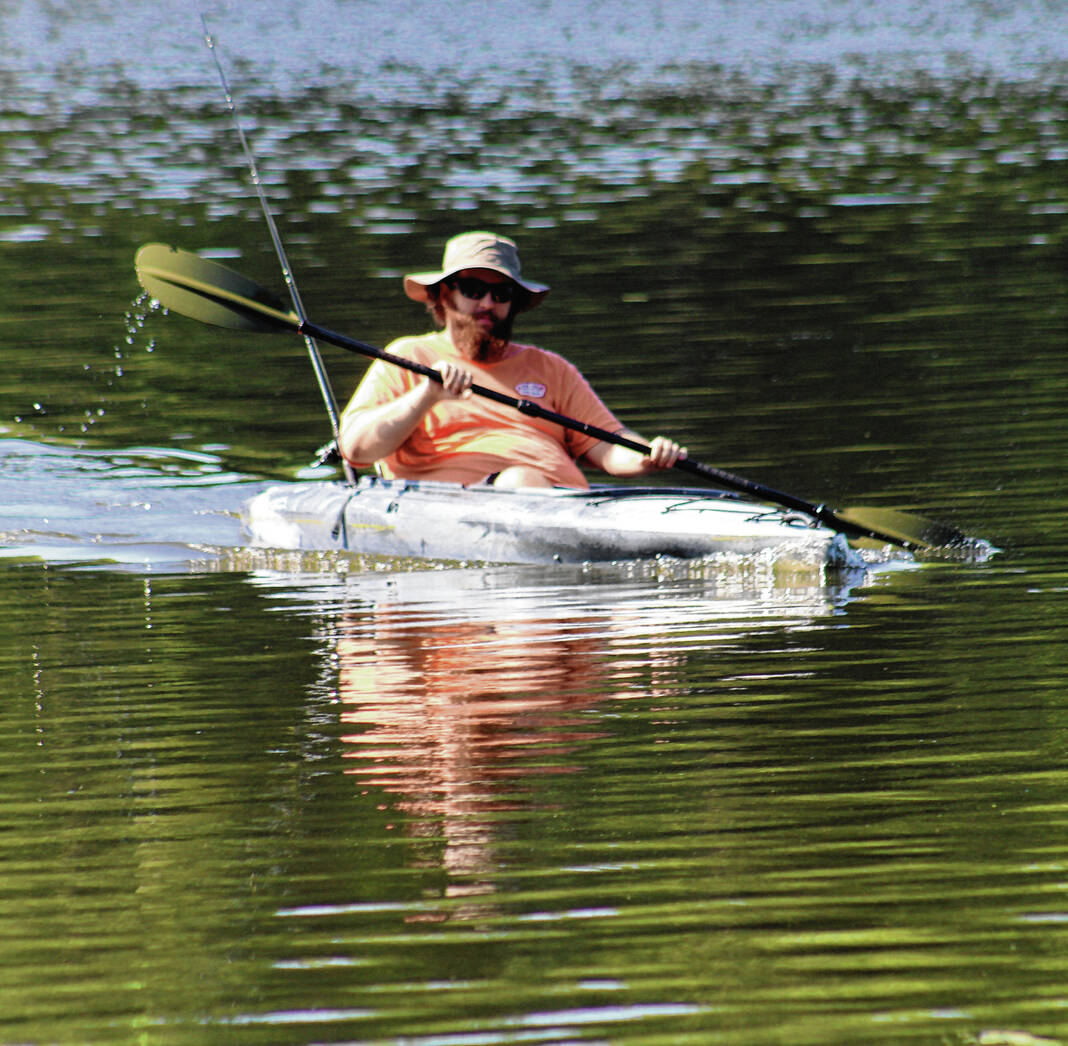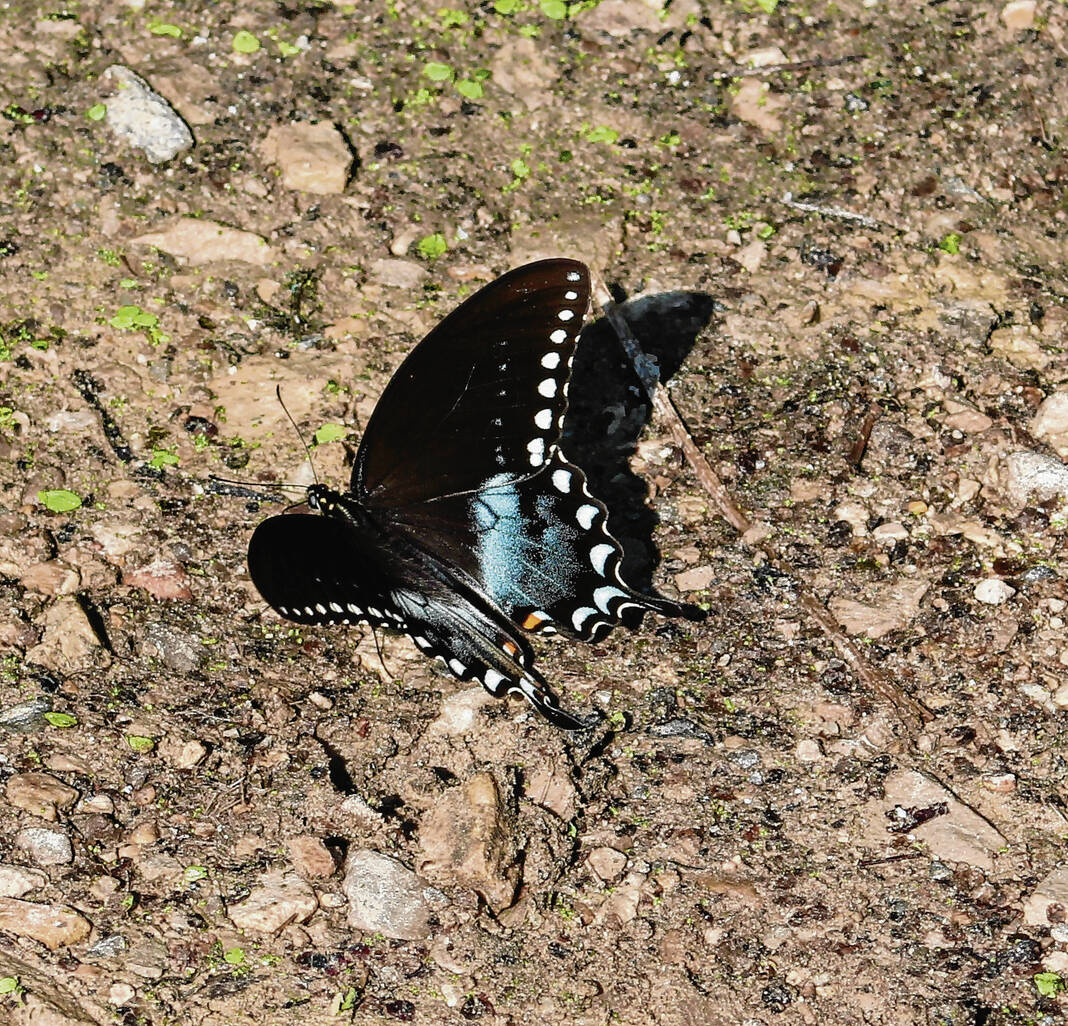The sun glistened off of Stanfield Lake, creating the type of surface look often referred to as diamonds, as canoes, kayaks and small boats skimmed the water with fishing rods dangling over the side.
On as fresh a summer Sunday morning as one could ask for, Muscatatuck National Wildlife Refuge attracted anglers who preferred to haul in bluegill and crappie over spending extra hours under the covers.
No one was more enthusiastic than the three-generation Sages, who hauled out enough bluegill to eat through the winter if they didn’t cook it all up in a fish fry.
Troy Sage, who at 54 has fished at Muscatatuck for 40 years, or since he was growing up on the outskirts of the refuge, son Chris of Scottsburg, and his own son, Trenton, 12, loaded bulging mesh-net containers of fish into their pickup truck alongside canoes.
Dinner?
“We hope,” said Troy, who now lives in North Vernon but hasn’t let moving a few miles down the road prevent him from sharing the productive water with his family. “We come every weekend.”
The U.S. Fish and Wildlife Service property is Seymour’s backyard outdoors playground, its nearly 7,800 secluded acres only moments removed from traffic and businesses, yet offering serene escapes for those who wish to retreat to nature for fishing, hunting, hiking, bird watching, outdoor photography, bicycling or simply inhaling fresh air.
The land and water terrain is varied enough and accessible enough that an estimated 170,000 people visit each year. They can even just park the car and take a walk.
“Almost the entire refuge is open to people on foot,” Park Ranger Donna Stanley said.
Beginnings
Muscatatuck is a Native American word translated to English as “land of winding waters.” In addition to the refuge, there is Muscatatuck Park in North Vernon, celebrating its 100th anniversary this year, plus the Muscatatuck River. The 53.7-mile-long body of water is a tributary of the White River and forms much of the southern boundary of Jackson County with Scott and Washington counties.
The refuge itself, created in 1966, was founded to provide resting and feeding areas for waterfowl during migration. Funding came through the sale of Federal Migratory Waterfowl Stamps, also known as duck stamps.
Bird watching is a popular activity at the refuge. On the same day the fishermen were out early, so were birders, some hoping to add to their life lists.
The visitor center, which only reopened earlier this summer after two years of being shut down due to the COVID-19 pandemic, includes a bird room. Individuals can sit in the semi-darkened room gazing through a picture window as birds, such as the cardinal, Indiana’s state bird, starlings and robins, swoop down and chow down at bird feeders. Beneath them might gather a squadron of squirrels hoping to feast on leftover food fallen to the ground.
Stanley said the bird room provides opportunity for those in wheelchairs to observe the birds without braving trails. A Fish and Wildlife website says 290 species of birds have been sighted at Muscatatuck.
The height of songbird migration is May, and on the annual Christmas Bird Count day, many fewer types are noted.
“There’s a different cast of characters in winter,” Stanley said.
A few days before the angler infusion, Nathan Barlow, who is originally from Seymour but currently lives in southern Illinois, paused on one of his own regular migrations to photograph birds and butterflies.
“It’s a hobby,” said Barlow, who plans to move back to Seymour. “I try to stop here when I can.”
So does Dan Kaiser, a wildlife photographer from Columbus, three or four days a week, sometimes accompanying his wife as she searches for fresh bird sightings or sometimes just to train his long camera lens on a spot where he thinks a comparatively rare bird may appear.
Muscatatuck is open to the public seven days a week with entrance through an electronically controlled gate from one hour before sunrise to one hour after sunrise. Starting early appeals to birders, some of whom were exiting by 8:30 a.m.
“Early, the wildlife is more active,” Kaiser said.
Muscatatuck is thickly populated with wildlife, but the animals can remain well-hidden in the woods from prying human eyes or anyone seeking to approach too close.
Among the animals roaming the premises are deer, raccoons, muskrat, turkey, bobcats, coyotes and river otters. The otters were reintroduced from Louisiana in 1995. It is permitted to gather mushrooms, fruits or berries in Muscatatuck, though only for personal consumption, not sale.
Muscatatuck includes several hiking trails, many of them short and of limited degree of difficulty, such as the Chestnut Ridge Trail, Wood Duck Trail and Turkey Trail.
On a recent day, friends Davida Pranger of Brownstown and Julie Bilz of Columbus made a sudden morning decision to hike at Muscatatuck. The sun was bright and the temperature was just breaking 70 degrees, so the circumstances were inviting.
They set a rendezvous for 10 a.m. and began what they planned to be about 4 or 5 miles of hiking with a short trek to Discovery Pond. The pond, near the refuge’s entrance, is a kids fishery, designed to lure them into the sport, although no one was present this morning.
The hikers walked and talked, gazed at the scenery, took note of wildflowers and took in the overall beauty of the refuge.
“I’ve never been here before,” Bilz said. “It’s a hidden gem. I just woke up, looked out and thought, ‘I need to get out.’”
Pranger, who recently visited Montana and explored nature in the West, was eagerly on board.
“I didn’t hesitate,” she said. “I love the wildness. It’s just beauty in nature and what God created.”
Fishing was good
Jerry Foster of Scipio was out on Stanfield Lake in his kayak for about an hour and a half and caught two bass of a size noteworthy enough to be photographed. He cut his morning short after his wife telephoned and asked him to deliver breakfast from the nearby Cracker Barrel.
Foster, who has fished at Muscatatuck for 35 years, said the catch “made for a good day. It’s just relaxing, nice and quiet.”
Anglers could see one another paddling in canoes or kayaks, or in small boats, but did not overlap territories.
Colton Patrick of Commiskey found plenty of room to combine paddling and fishing in his new kayak.
Patrick, 24, is a hunter but never really fished. He took up two new sports simultaneously. This was his third time out kayaking with a fishing rod, and he is still getting the hang of it but is having fun. Since he did not catch any fish, Patrick characterized his excursion as “duck watching.”
Jose Perez of Seymour and a friend got started later in the morning than many, casting from a wooden fishing dock by the boat launch at Stanfield. They may not have been early birds, but they brought their own worms. For bait.
“My wife told me she wanted to eat fish for dinner,” Perez said.
It took a little while for Perez to get his first bite, and when he reeled in a bluegill, it was so tiny it resembled a goldfish in size. Not even an appetizer. He released it, but within a half-hour, his count was increasing. Perez had four bluegill for the road — and the dinner plate.









